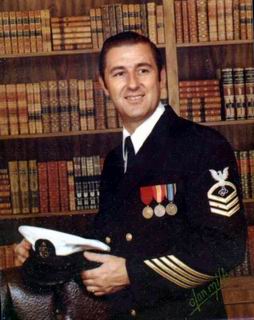|
By GARDNER DUTON
Anyone doubting it was cold at sea yesterday had only to ask any of the 172 officers and men
aboard the radar pickett destroyer Pillsbury.
Or better, all one had to do was to view her ice-coated bridge, decks and rails as she moored four hours
late with her squadron at Goat Island, Newport.
Yesterday noon, the skipper Lt. Cmdr Hanford Cruser. who hails from Norfolk radioed Cmdr. V.
A. Dybdal, squadron leader, that the Pillsbury was heavly coated with ice and would be late in arriving.
She had been at sea for eight days and was coming in for Christmas.
"It started about 7 Monday night when we were about 200 miles east of Newport." Cmdr Cruser
related >over coffee in the wardroom after the ship tied up.
"heavy snow squalls left piles of slush on the decks and it kept snowing until 7 this morning. Meanwhile, the wind was
hitting 35-40 miles an hour and the seas were rising with 40 foot waves.
Finally, around 10 a.m. today, the slush and the spray we were taking as we rolled started to freeze. By noon
|
I knew we would have to reduce our speed because of the seas and and I radioed ashore."
The ship was supplied with heavy cloth face masks and winter parkas for the deck crews. No one aboard
suffered even a frost bite.
"I don't often wear long underwear, but I sure am glad I had them on this trip." Cmdr. Cruser said.
 . .
Newspaper cliping 12/55
 . .
Ed Quinn EN3 GITMO Bay, Cuba
|
As the ship nuged alongside other ships of Escort Squadron 16 the ship's loud speaker system
was pouring forth Christmas carols.
Everyone on deck was wearing hooded parkas as they slithered over the icy deck's makingthe lines fast.
Up on the bridge, the skipper wore his cap.
"I just feel better with my cap on" he said afterwards.
Cmdr. Cruser said that as the spray froze the windows of the bridge coated so it was necessary for him
yo be out on deck to to see where they were going. Meanwhile, the temperature had dropped to 15
above, the coldest recorded on the trip.
The Pillsbury, used as an escort destroyer during the war, recieved the Presidential Unit Citation
for capturing a Nazi hunterkillersub in the Atlantic.
She dropped the depth bombs which brought the sub to the surface, her crew boarded her and closed
the seacocks whichthe Germans had opened as the sub surfased. As a result, she was the first German
submarine captured at sea.
After the war the Pillsbury joined the mothball fleet until last winter when she was converted into a radar
picket destroyer and and commissioned for active-duty last month.
First to board her when she moored last night was Cmdr. Dybdal and Lt. O. K. Olson, squardon Chaplain.
|









